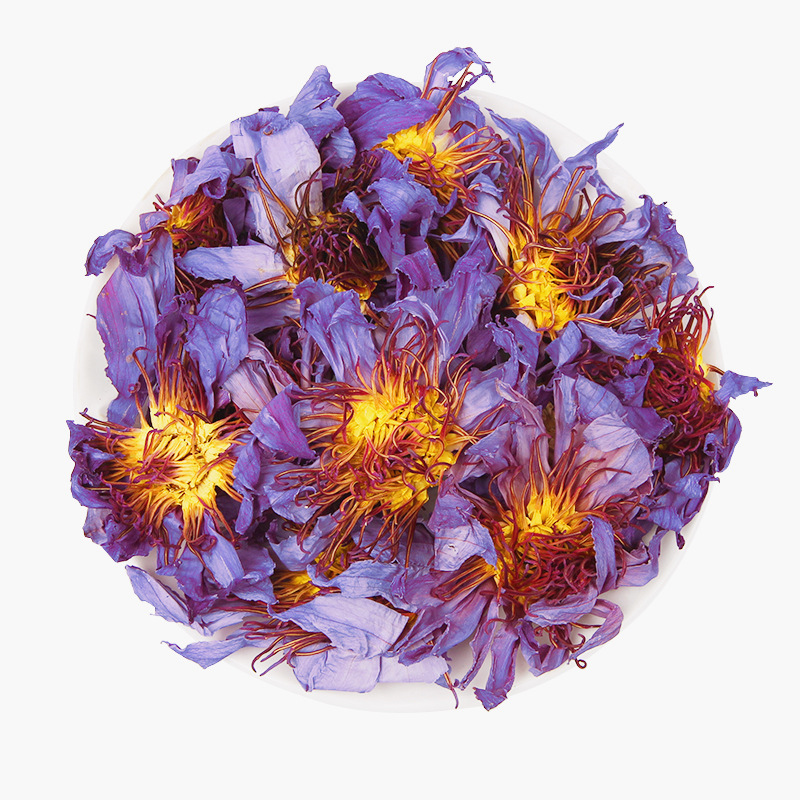
In the morning mist, a dreamy hue of blue quietly emerges from the water—that is the blue lotus unfurling its petals. This rare aquatic flower is no ordinary water lily; its petals refract the elusive true blue found in nature, as if the sky had been crushed and scattered across the water's surface. The ancient Egyptians revered it as the incarnation of the sun god, for its blossoms faithfully follow the sun's path, opening at dawn and closing at dusk, like an ever-tireless timekeeper.
In 1899, archaeologists discovered blue lotus seeds in Tutankhamun's tomb, dating back 3,300 years. Incredibly, these millennia-old seeds miraculously sprouted and bloomed in the 21st century. Scientists have also found that the blue lotus possesses a thermoregulatory ability akin to warm-blooded animals, maintaining its flower core at a precise 35°C (95°F) while blooming, creating a cozy "sky restaurant" for pollinating insects.
Most magical of all is the blue lotus's "self-cleaning" petals. Their surfaces are covered in nanoscale waxy protrusions, so even water droplets cannot cling, keeping them eternally pristine and elegant. This unique structure has inspired scientists to develop new waterproof materials. In Eastern cultures, the blue lotus symbolizes transcendence and enlightenment—its mystical blue hue is said to have appeared in the legend of the Buddha's footsteps, where lotuses bloomed with each step he took.
As the breeze passes, the blue lotus sways gently, as if whispering a tale that spans millennia—of life, resilience, and that untouchable beauty that stands apart from the world.
Contact:
For market reports or sourcing inquiries:
Etan Zong
Email: Etan@bzjiahe.com
Website: www.bzjiahe.com







